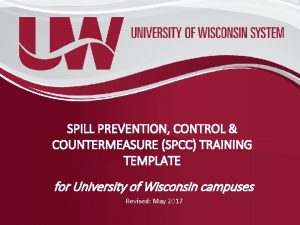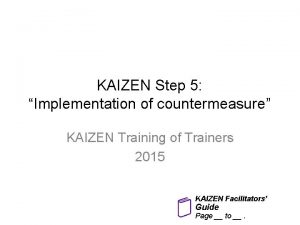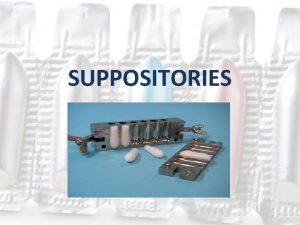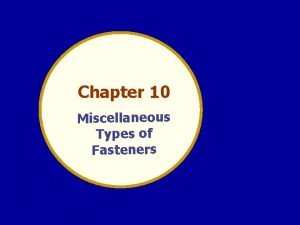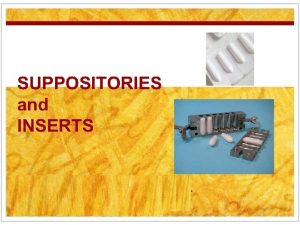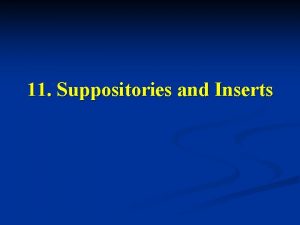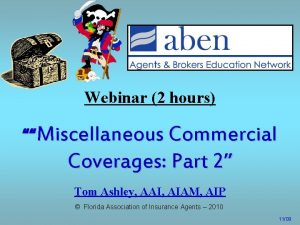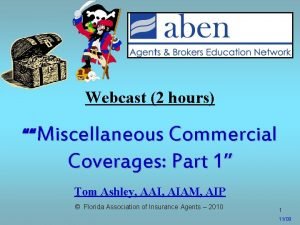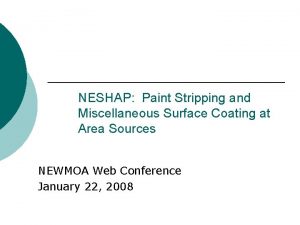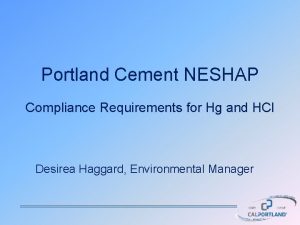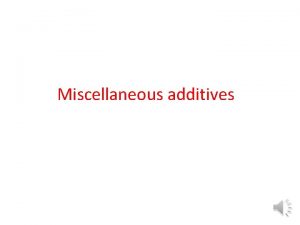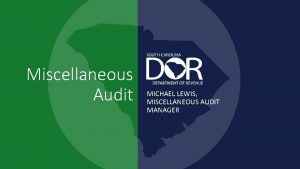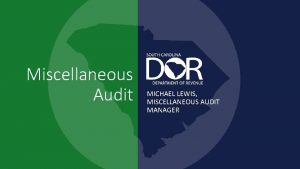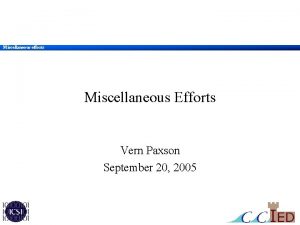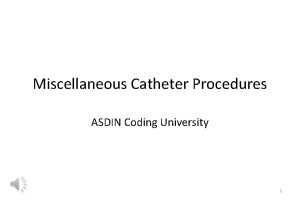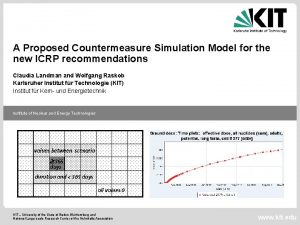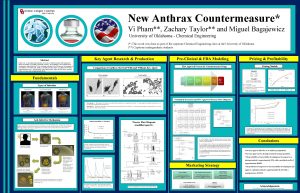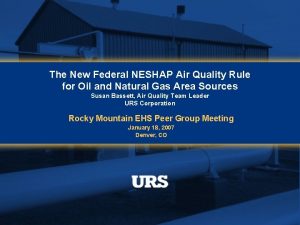Miscellaneous Organic NESHAP Compliance for a New Countermeasure


















- Slides: 18

Miscellaneous Organic NESHAP Compliance for a New Countermeasure Flare Production Facility at the Milan Army Ammunition Plant FRANKLIN engineering group, inc. Charlie Mc. Knight Eddie Goodwin Dennis Knisley Louis Evans

Presentation Outline • • • Project Overview and Regulatory Considerations Permitting Approach Miscellaneous Organic NESHAP (MON) Implementation Selection of Air Pollution Control Technology Conclusion FRANKLIN engineering group, inc.

Project Overview and Regulatory Considerations • Project executed as part of Armament Retooling and Manufacturing Support (ARMS) Program • Renovation of existing energetics manufacturing process line • Design and build facility to manufacture countermeasure flares for armed forces FRANKLIN engineering group, inc.

Project Overview and Regulatory Considerations Simplified Process Schematic FRANKLIN engineering group, inc.

Project Overview and Regulatory Considerations • Solvents utilized in manufacturing process: • Hexane – VOC and HAP • Acetone – Solvents must be recovered and reused • Other raw materials: • Magnesium – safe processing considerations • MON – proposed on April 4, 2002 • Construction to begin in 4 th quarter 2002 FRANKLIN engineering group, inc.

Permitting Approach MON/NSR Issues • MON applicability: – MON applicable as proposed – US EPA considering energetics manufacturing subcategory • MCPU was Group 1 Batch Process: – 98 % reduction of HAPs using control device – 95 % reduction of HAPs using recovery device • Additional consideration was New Source Review (NRS) threshold of 40 tpy VOC FRANKLIN engineering group, inc.

Permitting Approach (cont’d) Final Approach • Design, build and operate facility to meet proposed MON requirements for control of organic HAP emissions • Permit as Conditional Major Source at reduced manufacturing rate: < 10 tpy HAP emissions FRANKLIN engineering group, inc.

Additional Site-Specific Permitting Considerations • Meet discharge limits for on-site WWT Plant – Acetone in WW was significant issue • Utilization of existing open burning facility for disposal of energetic waste • Utilization of existing treatment facility for WW potentially contaminated with energetic FRANKLIN engineering group, inc.

MON Implementation • Reduction of HAP emissions from batch process vents greater than 95 % using recovery device – Control of comp mixing and drying vents > 95 % – Required monitoring for recovery device – Compliance testing requirements • MON storage tank requirements • MON WW requirements • LDAR program implementation FRANKLIN engineering group, inc.

Selection of Air Pollution Control Technology a RTO process most cost effective option of thermal oxidation alternatives FRANKLIN engineering group, inc.

Evaluation of Potential Air Pollution Control Technologies FRANKLIN engineering group, inc.

Evaluation of Potential Air Pollution Control Technologies Overriding Design Issues – SAFETY FIRST • Thermal oxidation considered only if safety issues could be addressed • Design for immediate isolation of process steps to prevent propagation through ductwork • Minimize potential for energetic buildup in ductwork FRANKLIN engineering group, inc.

Evaluation of Potential Air Pollution Control Technologies Final Control Technology Selection • Steam available for carbon regeneration step • Recovery and reuse of solvents (acetone and hexane) • Potential exothermic reactions with acetone (required water quench system for carbon beds) • Readily available disposal of WW after clean-up steps • Flame isolation valves with a gas cartridge actuator to eliminate flame/deflagration passage • Costs for carbon adsorption and RTO comparable FRANKLIN engineering group, inc.

Evaluation of Potential Air Pollution Control Technologies Activated Carbon Adsorption System and Auxiliary Units • • Preconditioning (vent gas cooling) Three fixed bed carbon adsorbers One bed is regenerated with steam while other two on-line Designed to readily allow for expansion • Decanter for organic/aqueous separation • Organic fraction – water wash step followed by distillation for hexane recovery • Aqueous fraction – steam stripping column for acetone recovery FRANKLIN engineering group, inc.

Conclusions • Energetics facilities have unique challenge determining compliance options for MON • Final control device and design decisions must account for all sitespecific considerations FRANKLIN engineering group, inc.

Carbon Adsorption System FRANKLIN engineering group, inc.

Process Ductwork FRANKLIN engineering group, inc.

Questions? Paper Available at: www. franklinengineering. com FRANKLIN engineering group, inc.
 Spill response plan example
Spill response plan example A single countermeasure is sufficient for sqli attacks
A single countermeasure is sufficient for sqli attacks Countermeasure implementation
Countermeasure implementation Packaging and storage of suppositories
Packaging and storage of suppositories Miscellaneous details
Miscellaneous details Types of fasteners
Types of fasteners Classify the planning tools in carpentry
Classify the planning tools in carpentry Miscellaneous operators in javascript
Miscellaneous operators in javascript Miscellaneous base for suppositories
Miscellaneous base for suppositories Vera claythorne quotes
Vera claythorne quotes Electronic cookware miscellaneous
Electronic cookware miscellaneous Miscellaneous base for suppositories
Miscellaneous base for suppositories Miscellaneous commercial insurance
Miscellaneous commercial insurance Miscellaneous commercial insurance
Miscellaneous commercial insurance Letter with subject line format
Letter with subject line format Fatty acid composed of
Fatty acid composed of Miscellaneous sauces
Miscellaneous sauces Formuö
Formuö Typiska novell drag
Typiska novell drag
